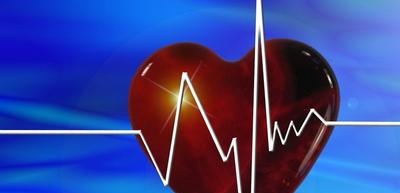|
 In recent years, remarkable progress has been made in the surgical treatment of diseases of the heart and blood vessels. Previously, the heart was considered a no-go area for the surgeon. In recent years, remarkable progress has been made in the surgical treatment of diseases of the heart and blood vessels. Previously, the heart was considered a no-go area for the surgeon.
Heart surgery was not performed even in cases where the patient was in danger of imminent death. One of the greatest surgeons of the 19th century, Billroth, wrote: "A surgeon who dares to sew up a heart muscle deserves to lose the respect of his comrades."
In the past, patients with various heart diseases used exclusively therapeutic treatment. Many heart defects were considered incurable. The lack of perfect research methods made it impossible to establish an accurate diagnosis and nature of the disease. Therefore, some congenital heart defects were the lot not of clinicians, but of pathologists who establish the cause of death.
In our time, the surgeon who refuses to suture a heart wound will lose the respect of his comrades, and the evolution of views on the possibility of heart surgery took only about one century.
Initially, operations were used only for injuries, when foreign bodies got into the heart and other mechanical injuries. However, the further development of surgery, the improvement of methods of pain relief, the emergence of new, more effective equipment expanded the scope of cardiovascular surgery, and made it possible to surgically treat heart disease.
Cardiovascular surgery developed at an especially rapid pace.
In the 40s of the last century, one of the major domestic surgeons, Yu. Yu. Dzhanelidze, collected information published in the medical literature on a thousand cases of operations for heart wounds. More than 300 of them were performed by Russian surgeons. Nowadays, operations for a wound of the heart have become the property of all surgical departments that are on duty.
The further development of physics, electronics, chemistry, the emergence of new, perfect equipment and instruments, the introduction into medical practice of methods of anesthesia, which made it possible to regulate metabolic processes, control respiration and blood circulation, greatly contributed to the development of cardiovascular surgery and, in particular, the surgical treatment of diseases. hearts.
First of all, they began to perform operations for acquired heart defects that arose after rheumatism suffered in childhood. As a result of this disease, the mitral valve of the heart is often affected, stenosis develops - a narrowing of the opening that passes blood from the left atrium to the left ventricle, blood circulation is disturbed, blood stagnates in the lungs, shortness of breath, edema, and general weakness appear. Patients become disabled. Therapeutic treatment of this disease is ineffective.

And then the surgeon comes to the rescue. Surgical intervention allows you to eliminate the cause of the disease. After artificial expansion of the mitral opening, blood freely flows from the left atrium into the left ventricle, the disturbed blood circulation is restored, the stagnation of blood in the lungs is eliminated, shortness of breath and edema disappear, the patient becomes efficient. In many specialized heart disease institutes and in large clinical hospitals, such operations have become routine.
These operations are very popular among patients. Patients, usually young people, as a rule, themselves insist on surgical intervention. Particularly good results are achieved if the operation is combined with persistent treatment of rheumatism.
Surgical treatment of heart valve insufficiency is also successfully carried out.These operations are more complex, they are often performed on an open, "dry" heart using artificial circulation.
Congenital heart disease was a terrible disease from which patients often died in their youth. Now, when science has gone far ahead, there are opportunities for an accurate diagnosis of congenital heart disease. And this is extremely important, since under this general name a number of diseases are combined, each of which requires a special operation. Among congenital heart defects, the most common are non-closure of the Batalle duct (the connection between the aorta and the pulmonary artery), tetrad of Fallot (improper division of large vessels and narrowing of the pulmonary artery), non-closure of the septum between the atria or ventricles.
The diagnosis of all these congenital heart defects requires a large number of special studies. Therefore, in research cardiological institutes, clinics and hospitals, painstaking work is carried out to find perfect and accurate diagnostic methods that allow them to quickly and accurately recognize which type of congenital defect doctors are dealing with. They are helped by electronics, technology, radiology and chemistry, which make it possible to study in detail the activity of the heart and almost always unmistakably establish signs of one or another type of congenital heart disease.
This big and painstaking work has already borne fruit. For the majority of congenital malformations, sufficiently definite diagnostic signs and an effective method of treatment have been developed.
Non-closure of the Batallova duct is less difficult for examination and treatment.
In this disease, the essence of the operation is reduced to ligation and transection of the duct or its excision in order to eliminate the communication between the pulmonary artery and the aorta.
The so-called tetrad of Fallot belongs to the more complex congenital heart defects. With the surgical treatment of this heart defect, one of the causes of circulatory disorders is most often eliminated, a connection (anastamosis) is made between the vessels of the large and pulmonary circulation.
The less complex of these operations are usually performed under hypothermia (artificial cooling), the more complex ones are performed on an open, dry heart with no access to blood. Temporary cardiac arrest is achieved by the introduction of special chemicals into the orifice of the clamped aorta. Passing through the coronary vessels, the drug paralyzes the heart. For the most complex operations requiring long-term shutdown of the heart, a heart-lung machine is used.
In our country, operations are carried out to install artificial, most often made of synthetics, heart valves, in their absence or underdevelopment. This operation is very difficult, but possible. It is performed on the "off" heart with the use of artificial blood circulation.
Surgery has found a place for itself in the treatment of such dangerous and, unfortunately, very common diseases such as angina pectoris and heart attack - contraction and narrowing or blockage of blood vessels that feed the heart. In general, these diseases are usually treated with therapeutic treatment. So, with spasm of the coronary vessels - a violation of blood circulation in the vessels that feed the heart, use cardiovascular and sedative drugs that have a beneficial effect on the nervous system. Various novocaine blockades are also widely used - vagosympathetic, retrosternal, intradermal. After novocaine blockade, attacks of pain and tightness in the chest usually stop, but most often only for a short time. More effective and long-term results of treatment can be achieved by surgery - by dissecting the skin in the reflex zone of the heart.
For angina pectoris, other heart surgeries are also used, especially when the obstruction of the vessels is caused by arteriosclerosis and thrombosis of the heart vessels. Surgery can, for example, eliminate "ischemia" - insufficient blood supply to the heart.This operation consists in the fact that other tissues and organs with abundant blood supply are "sutured" to the naked heart, for example, an omentum removed from the abdominal cavity through the diaphragm, cardiac shirt, lung, a flap from the diaphragm, etc. To improve the blood supply to the heart other methods can also be used, such as ligation of the internal mammary artery. Finally, there are attempts to perform operations directly on the heart and its vessels. Large vessels are transplanted into the muscular wall of the heart, anastomoses are made between the vessels of the heart and adjacent arteries. In some cases, the replacement of impassable heart vessels with canned grafts or vascular grafts is performed.

The listed cases of surgical intervention do not exhaust all the options for the possible use of surgical methods in the treatment of angina pectoris. Of course, the main and main thing in the fight against this disease is prevention, improvement of working and living conditions, reasonable rest, recreational activities, physiotherapy exercises, hardening of the body. And yet, surgical intervention as a means of treating angina pectoris has already gained fame as a reliable assistant to a therapist. The situation is more complicated with the surgical treatment of myocardial infarction.
Myocardial infarction is caused by blockage of one of the arteries and vasospasm of the heart. As a result of blockage, there is an acute exsanguination of a certain area of the heart and the subsequent necrosis of its wall. The ideal option, of course, would be to remove a blood clot - a blood clot that has formed a plug and restore blood circulation. But such an operation on a heart with insufficient blood supply is very difficult and dangerous. Operations designed to improve blood circulation in the roundabout, preserved vessels of the heart are used much more often.
Surgical methods can be effective both in treating the heart attack itself and in preventing the dangerous consequences of this disease. After a myocardial infarction, a thinning of the heart wall, the so-called aneurysm, is often formed. The aneurysm can rupture and cause profuse, fatal bleeding. This consequence of myocardial infarction is often eliminated by surgery. In acute circulatory disorders and sudden cardiac arrest, cardiac contractions can be triggered using electrical impulses. To perform the operation, the chest cavity is opened on the left side and the heart is exposed. Two or three thin electrodes are sewn into the muscle wall of the left or right ventricle, consisting of a stranded wire covered with insulation. The free ends of the electrode are brought out and attached to a stimulator, which makes the heart beat rhythmically.
Electrostimulation of the heart can be used both in emergency cases and for a long time if for any reason the activity of the heart is disturbed. At present, various electrostimulators, both stationary and portable, have been created.
Kukin N.N. - Ways of surgery
|
 In recent years, remarkable progress has been made in the surgical treatment of diseases of the heart and blood vessels. Previously, the heart was considered a no-go area for the surgeon.
In recent years, remarkable progress has been made in the surgical treatment of diseases of the heart and blood vessels. Previously, the heart was considered a no-go area for the surgeon.










